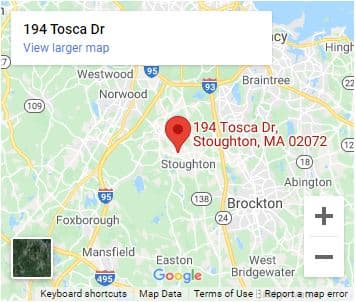How Does Harsh Weather Affect Your Roof?
Roofing systems are your first line of defense when protecting your home from the inclement weather. Learn how you can protect your home by protecting your roof.
Weather and storms of all types can be a burden to your roofing system. While the risks that storms and weather pose are known to many homeowners, it is often overlooked, and the effect on their roofing structures are misunderstood. Here are six extreme weather conditions that can negatively impact your roofing structure, causing further damage to your home.
High Wind Damage
Storms are all different but usually are accompanied by one thing in common, fast-moving and robust winds. These winds can wreak havoc and cause significant damage to residential and commercial roofing structures. As the winds strengthen, shingles and tiles become looser. The roofing materials begin to fall off your roof, leaving your home prone to leaks and other damages. Strong winds don’t only damage the exterior of your roof, but also has the capability of destroying the wooden frame of your roof. Always, after a storm of any magnitude, it is advised to check the conditions of your roof. If any damage is visible, it is crucial to contact a local roofing contractor to do a thorough inspection, and if needed, a repair as soon as possible.
Rain and Water Damage
A roofing system protects you and your home from inclement weather, like rain. Damaged roofs are rarely caused by rainfall alone. Most causes stem from missing tiles, cracked shingles, and improper installations. These causes lead to water leaking into your roofing structure and then your home. Homeowners are advised to routinely check their roofs to make sure it is in good condition, and make sure any vulnerabilities are fixed.
Tree Damage
Do large trees surround your home? If so, you are at a higher risk of property damage during a storm. Clearing out broken branches, falling limbs, and debris that may have fallen from previous storms can help prevent future damage to your home’s roofing system. Extensive damage to your roof may call for a professional roofing contractor. Contacting a roofing expert will provide you with reliable repair and installation solutions and help protect you from future storms.
*Experts recommend that homeowners trimmed trees and cut off branches that pose any level of risk to the roofing of one’s home, especially in storm-prone areas.
Heat Damage
In individual states, heat plays a significant concern for many housing and building structures. Extreme heat in places like Arizona and California can be as harmful as other severe weather conditions throughout the country. Prolonged exposures to the sun’s heat make the roofing material on your home age faster. The roofing material then begins to become damaged inside and out, causing the tiles or shingles to curl up, tear, or even crack.
Structural ventilation is essential and can affect the indoor temperature of your home. Talk to a roofing contractor if you find that the tiles or shingles on your roof changed position or if you notice a rise in temperature inside your home. These could be furthering signs of heat damage.
Hail Damage
Hail storms can wreak havoc throughout the northeast United States. These storms can cause damages worth billions to homes and businesses. Hail storms are notorious for causing significant damage to roofs, windows, sidings, and just about anything that is outside. No matter what type of roofing material a contractor uses, hail storms can still cause damage big and small, eventually weakening the roofing system. If these fractures do not get repaired in time, small cracks will get bigger, causing sections of the roof to tear and fall off. The damage to the roof depends heavily on the intensity of a hailstorm and how big the hail was when it is falling.
Snow Damage
Snow is one weather condition that many homeowners overlook. If snow is not removed, large ridges of frost or ice dams begin to form at the edge of the roofline near the gutters. When ridges of frost or ice dams start to form, melting snow water is unable to run off the roof and ends up backing up and causing leaks.
Weather and storms can and will cause damage to your home. Weather damage can worsen over time, but monitoring your roof yourself can help prevent any significant damages. Having a professional and certified roofing contractor inspect your roofing system regularly will make sure your home avoids any damages.


